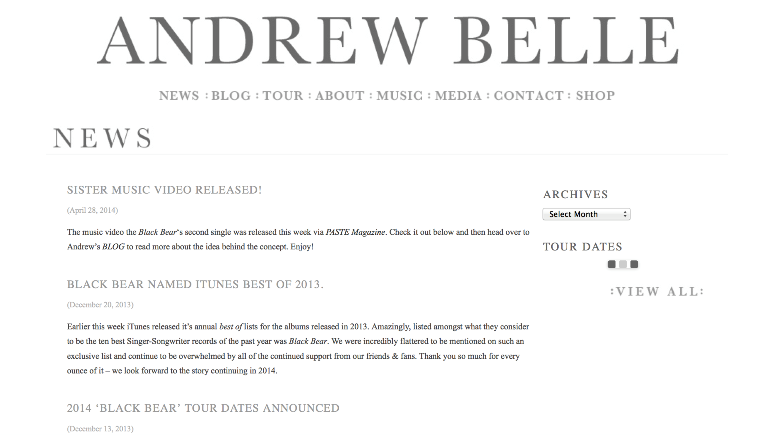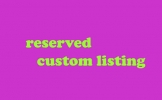Posted by Margaret Rode
When running your own creative business, public relations, or PR, is key to driving awareness to your business and your website. You’ll need to make a decision early in your business as to whether you will conduct this PR in-house (using your own team), or if you will hire a PR firm to do the majority of this work. Seth Cassel, manager for musician Andrew Belle, comments on this very conundrum:
We found PR to be not “you get what you pay for”, but rather “you don't get what you don't pay for”. What I mean is that hiring cheaper, less experienced and less connected publicists meant that we had a hard worker who can block and tackle, but couldn’t have major press expectations. And, when we did hire a major national publicist, the potential of big things was always present, but never realized. We eventually realized we could do the blocking and tackling on our own, while saving the PR fee and adjusting our expectations accordingly. Going forward, we will likely focus on paying more for results than for potential.

So, there are pros to both. Hiring a PR firm frees up your time, and could get you connections with media outlets that you didn’t previously have. In-house PR allows you to potentially save a lot of money and to spin your PR campaigns in the voice and style you want. Today, we’ll discuss the former.
Be Ready with Your Story
Taking care of PR for your creative business can be time-consuming but worthwhile. If you’re a new and/or first-time business owner in your field, it was probably a lot of work getting things off the ground, you had to create a business plan, make your own websites, hire staff, and launch your project… and now you must act quickly to take care of you own PR. You’ll need to do quite a bit of research and networking to ensure that the buzz you’re creating about your product or service gets out there. Here are a few essential steps to successfully doing your own PR.
Have the Right Tools and the Best Contacts
To start, create an email template and compile a press list of contacts to which you’ll send your story. This will serve as the backbone for your present PR campaign. You’ll of course need to tweak and personalize each communication, but having a solid base on which you’ll run your PR will ultimately save you time, allowing you to produce quality communications whenever necessary.
The Email
Your email template should be concise but interesting, a simple pitch that really says something special. Remember, bullet points are always useful, hard facts draw in and keep the attention of readers, and leaving room for personalization is key. Check out this strong example by Zach Taiji on SocialMediaToday.com.
With your email, make sure to:
- Include an introduction to you and your business (e.g., “Collective Designs is a creative design firm that specializes in graphics for digital marketing. I am the CEO and Creative Director, Deborah Smith.”)
- Convey the news you want announced (e.g., “Collective Designs has brought on industry leader Sarah White as Design Strategist to even further enhance Collective Designs’ aesthetic authority and vision.”)
- Outline the actions you are requesting and include any relevant materials (e.g., “Attached is a press release for immediate release; it includes details of Ms. White’s career history and aspirations for her new role at Collective Designs.)
Finally, the subject must be captivating. You’re going to need to grab the attention of media contacts who see emails like this every day, so make sure you stand out – while remaining professional, of course.

photo credit: https://www.flickr.com/photos/stewf/2922179943, Stewf via http://photopin.com, photopin http://creativecommons.org/licenses/by-nc-sa/2.0
The Press List
For your press list, start small but aim big. First, think of any friends and family that may have connections to media outlets or a large presence on social media. Assuming you have interesting news, the bloggers and other media reporters that will be most likely to push your story are those that know you or know your stuff. Next, get ready to research. Scour the Internet for sources that are relevant to your brand: websites, blogs, start-up networks (contests, funders, forums, etc.) and the online presence of other entrepreneurs. Finally, go for the big guys. Find the press contact for major media outlets, research individual contacts, find phone numbers and specific emails. This will feel like a Hail Mary play, but it could be the one that pays off big time.
The Press Release
Press releases have a bit of science to them. There is a generally accepted format that is easy to follow.
- Include the release timing (usually: “Immediate Release” or “Embargo, Relevant Date”)
- Create a solid – and bolded – headline and sub-headline. Lay the entire message out at the very beginning (e.g., “COLLECTIVE DESIGNS HIRES SARAH WHITE AS DESIGN STRATEGIEST – Industry-leading design strategist Sarah White will spearhead Collective Designs’ new style.




